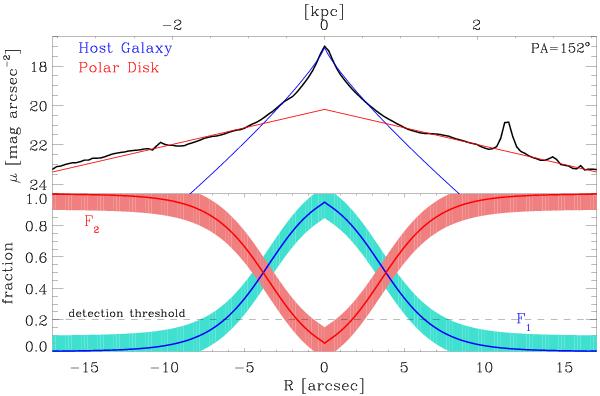Fig. 3

Light contribution of the host galaxy and the polar disk. Upper panel: the long-slit luminosity profile (instrumental surface brightness) obtained by collapsing the long-slit spectrum (PA = 152°) along the wavelength direction in the 8500 <λ< 8800 region. The profile is decomposed into the contribution of a Sersic profile (associated to the host galaxy, in blue) and an exponential disk (associated to the polar disk, in red). Bottom panel: fractional contribution of the host galaxy (F1, in blue) and the polar disk (F2, in red) with respect to the median galaxy flux (normalized to 1). For a given radial bin R, the spectral decomposition code computes the best fit value  in the interval
in the interval  (which is represented by the shaded regions in the lower panel), and it assumes F1,2 = 0.2 as detection limit for a component (represented by the dashed horizontal line). See Sect. 3 for details.
(which is represented by the shaded regions in the lower panel), and it assumes F1,2 = 0.2 as detection limit for a component (represented by the dashed horizontal line). See Sect. 3 for details.
Current usage metrics show cumulative count of Article Views (full-text article views including HTML views, PDF and ePub downloads, according to the available data) and Abstracts Views on Vision4Press platform.
Data correspond to usage on the plateform after 2015. The current usage metrics is available 48-96 hours after online publication and is updated daily on week days.
Initial download of the metrics may take a while.


